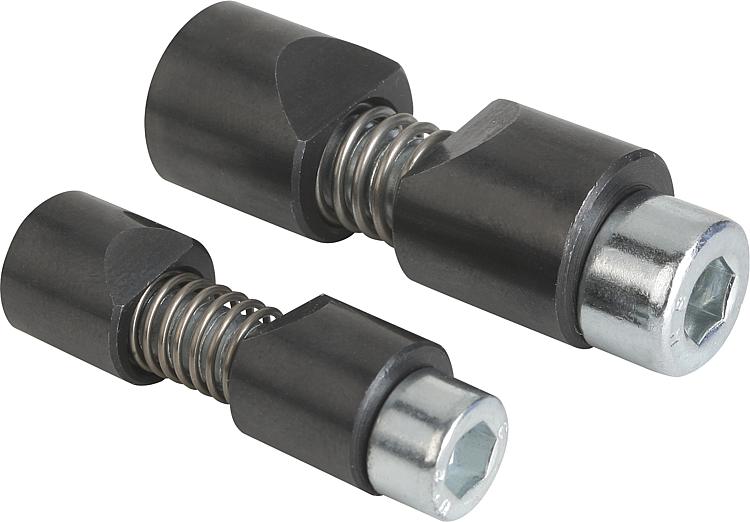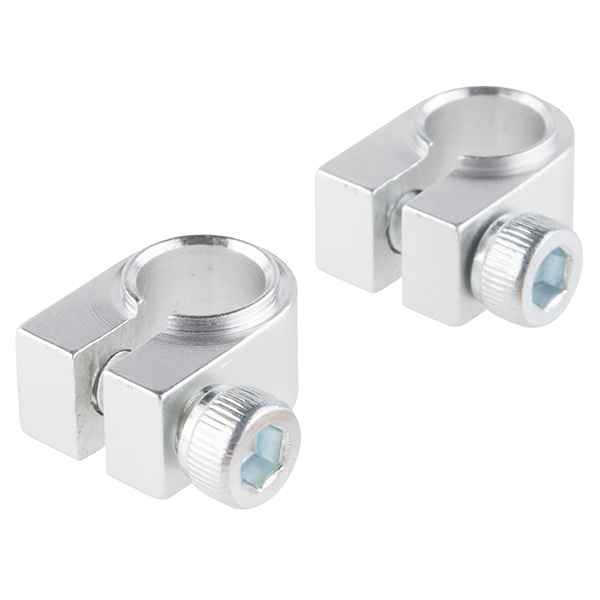Product Description
Factory Customized Precision CNC Machining Parts Stainless Steel Polished Shaft Collar OEM Locking Clamping Shaft Collar
Basic Information :
| Tolerance | 0.02~0.1mm. |
| Materials | Low, middle,high carbon steel / spring steel / Stainless steel 201, 301, 304, 316 / Aluminum / Brass / Bronze / Copper / Titanium / Plastic (PP, Nylon, PVC, APET) Brass or ABS,POM Ect And Customized raw material. |
| Surface Finish | Heat treatment / Polishing,Electronic Polishing / (Zinc, nickel, chrome, tin, brass, glod, silver, titanium) Plating / Electrophoresis / Black Oxide / Hot-dip galvanizing / Powder Coating / Paint Coating / Blasting / Shot Blasting / Bead Basting / Anodizing / Phosphating / PAD Printing / Laser etching / Dacromet Coating / Enamel. |
| Payment terms | Trade Assurance TT,paypal,Western Union,alipay,L/C. |
| Packing Detail |
Inner Packing: PE bag / EPE Foam Packing / Anti-Rust Paper Packing / Blister / SMT / Vacuum Packing / Plastic Box Packing / Color Box Packing. Outter Packing: Stretch Film Packing / Carton / Pallet / Wood Case. |
Our Advantage
-
Provide OEM/ODM service and assembling service, since 2000.
- One-stop purchasing service :Stamping part, CNC lathe part, CNC milling part, Springs, Shafts, fastener etc.
- The 2ndtier supplier of , factory audits passed.
- Product certification: RoHS, HE, vailable.
- Management certification: ISO/9001: 2015 and IATF16949 Passed.
| Application: | Auto and Motorcycle Accessory, Hardware Tool, Machinery Accessory |
|---|---|
| Standard: | GB |
| Surface Treatment: | Polishing |
| Samples: |
US$ 50/Piece
1 Piece(Min.Order) | Order Sample Customized services
|
|---|
| Customization: |
Available
| Customized Request |
|---|
.shipping-cost-tm .tm-status-off{background: none;padding:0;color: #1470cc}
|
Shipping Cost:
Estimated freight per unit. |
about shipping cost and estimated delivery time. |
|---|
| Payment Method: |
|
|---|---|
|
Initial Payment Full Payment |
| Currency: | US$ |
|---|
| Return&refunds: | You can apply for a refund up to 30 days after receipt of the products. |
|---|

Can I find information on the application of locking collars in power transmission systems?
Yes, you can find information on the application of locking collars in power transmission systems. Locking collars are commonly used in power transmission applications to secure rotating components such as pulleys, sprockets, gears, and bearings onto shafts. They provide a reliable and cost-effective method for fastening and preventing slippage in power transmission systems. Here are some sources where you can find information on the application of locking collars in power transmission systems:
- Manufacturer Websites:
- Industrial Product Catalogs:
- Engineering Handbooks and Reference Manuals:
- Online Technical Forums and Communities:
- Professional Associations and Trade Publications:
Many manufacturers of locking collars provide information on their websites about the application of their products in power transmission systems. They may offer product catalogs, technical specifications, application guides, and case studies that highlight the use of locking collars in power transmission applications. Manufacturer websites are a valuable resource as they provide detailed information about specific products and their suitability for power transmission systems.
Industrial product catalogs, whether in print or online, often feature sections dedicated to power transmission components. These catalogs may include information about locking collars and their application in power transmission systems. They typically provide product descriptions, technical specifications, and illustrations or diagrams that demonstrate how locking collars are used to secure components in power transmission assemblies.
Engineering handbooks and reference manuals, particularly those focused on mechanical power transmission, can provide comprehensive information on the application of locking collars. These resources cover various aspects of power transmission systems, including fastening methods, alignment techniques, and component selection. They may include specific sections or chapters that discuss the use of locking collars and provide guidelines for their proper application in power transmission systems.
Participating in online technical forums and communities related to power transmission can be a valuable way to gather information on the application of locking collars. These forums provide a platform for professionals and enthusiasts to share their experiences, ask questions, and exchange knowledge. Engaging in discussions or searching for relevant threads can provide insights into the practical application of locking collars in power transmission systems.
Professional associations and trade publications in the field of power transmission may offer resources that cover locking collar application in power transmission systems. These resources can include articles, technical papers, or webinars that discuss best practices, case studies, and industry trends related to power transmission components. Subscribing to relevant publications or joining industry associations can provide access to such resources.
When seeking information on the application of locking collars in power transmission systems, it’s important to consider the credibility and reliability of the sources. Look for materials published by reputable organizations, manufacturers, or industry experts. Cross-referencing information from multiple sources can help verify accuracy and gain a comprehensive understanding of how locking collars are utilized in power transmission applications.
By leveraging these information sources, you can gain valuable insights into the application of locking collars in power transmission systems. This knowledge can assist you in selecting and using locking collars effectively for securing components and ensuring reliable power transmission in various industrial settings.

What are the common materials used in manufacturing high-performance locking collars?
In the manufacturing of high-performance locking collars, several materials are commonly used due to their specific properties and suitability for the intended applications. Here are some of the common materials used:
- Steel:
- Aluminum:
- Brass:
- Plastics:
- Composite Materials:
Steel is a widely used material for locking collars due to its excellent strength and durability. Different grades of steel, such as carbon steel or stainless steel, may be utilized depending on the specific requirements of the application. Steel locking collars offer high load-bearing capacity, resistance to wear, and the ability to withstand demanding operating conditions.
Aluminum locking collars are chosen for applications where weight reduction is a priority. Aluminum is lightweight while still providing good strength and corrosion resistance. It is commonly used in industries such as aerospace or automotive, where reducing the overall weight of the system is crucial for performance and efficiency.
Brass locking collars are valued for their corrosion resistance, electrical conductivity, and aesthetic appeal. They are often used in applications where a non-magnetic material is required, such as in electrical or electronic systems. Brass collars are also popular in decorative or architectural applications due to their attractive golden appearance.
Various types of plastics, such as nylon, Delrin (acetal), or polypropylene, are utilized in the manufacturing of locking collars. Plastic collars offer advantages such as lightweight, corrosion resistance, and non-magnetic properties. They are commonly used in industries like food processing, medical equipment, or electronics, where non-metallic materials are preferred to avoid contamination or interference with sensitive components.
Composite materials, which consist of a combination of different materials, are gaining popularity in the manufacturing of locking collars. These materials often combine properties such as high strength, low weight, and corrosion resistance. Fiber-reinforced composites, such as carbon fiber or fiberglass, are commonly used in high-performance applications where exceptional strength-to-weight ratios are required.
The choice of material for a high-performance locking collar depends on several factors, including the application requirements, environmental conditions, desired strength, corrosion resistance, weight considerations, and budget constraints. It is important to select a material that can withstand the specific operating conditions and provide the necessary performance characteristics for the intended application.

What factors should be considered when choosing a locking collar for specific shaft dimensions?
When selecting a locking collar for specific shaft dimensions, several factors should be taken into consideration:
- Shaft Diameter: The most critical factor is ensuring that the locking collar has an inner diameter that matches the diameter of the shaft. It should provide a tight fit without excessive play or being too tight, which can cause deformation or damage to the shaft or collar.
- Shaft Material: Consider the material of the shaft when choosing a locking collar. Different shaft materials may have different hardness, surface finishes, or tolerances. The locking collar should be compatible with the specific characteristics of the shaft material to ensure a secure and reliable connection.
- Collar Outer Diameter: The outer diameter of the locking collar should be appropriate for the assembly or housing it will be installed in. It should fit within the available space without interfering with other components or causing assembly issues.
- Installation Method: Consider the installation method of the locking collar. Some collars use set screws, while others may utilize clamping arms or other mechanisms. Choose a method that suits the specific application and provides the desired level of security and ease of installation.
- Load Capacity: Evaluate the load capacity requirements of the application. The locking collar should be capable of withstanding the anticipated loads and forces without deformation or failure. Consider factors such as static loads, dynamic loads, vibrations, and shock that the collar will be subjected to.
- Environmental Factors: Take into account the environmental conditions in which the locking collar will operate. Factors such as temperature, humidity, exposure to chemicals, or presence of corrosive elements can affect the choice of materials and coatings for the collar to ensure long-term performance and durability.
- Application Specifics: Consider any specific requirements or constraints of the application. This may include factors such as speed, precision, alignment, or compatibility with other components. Ensure that the chosen locking collar can meet these specific needs effectively.
It is important to carefully review the technical specifications, dimensions, and compatibility information provided by the manufacturer or supplier of the locking collar. Consulting with experts or engineers familiar with mechanical assemblies can also provide valuable insights and assistance in choosing the right locking collar for specific shaft dimensions.


editor by CX 2023-11-07
